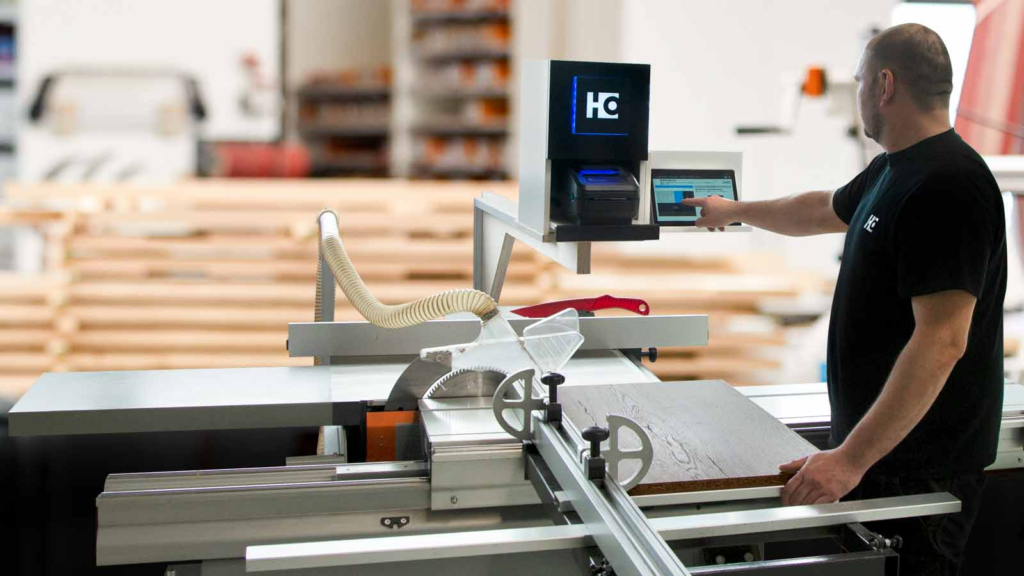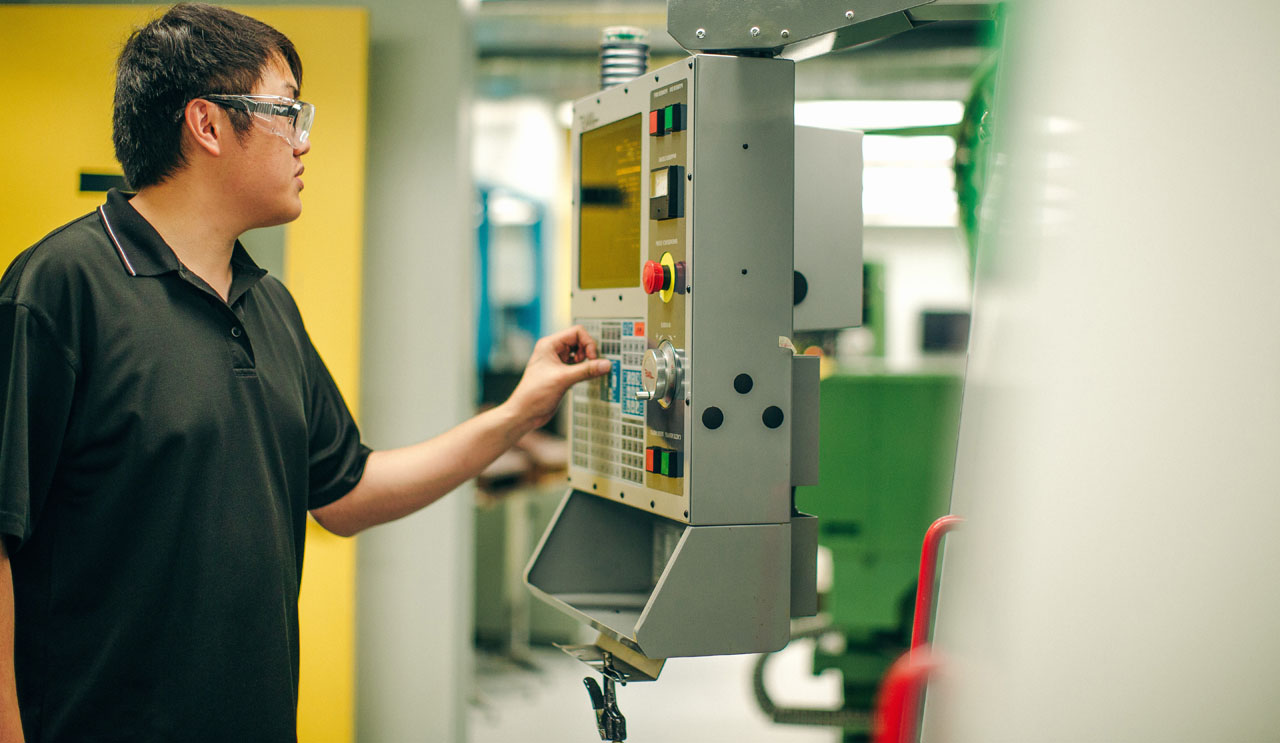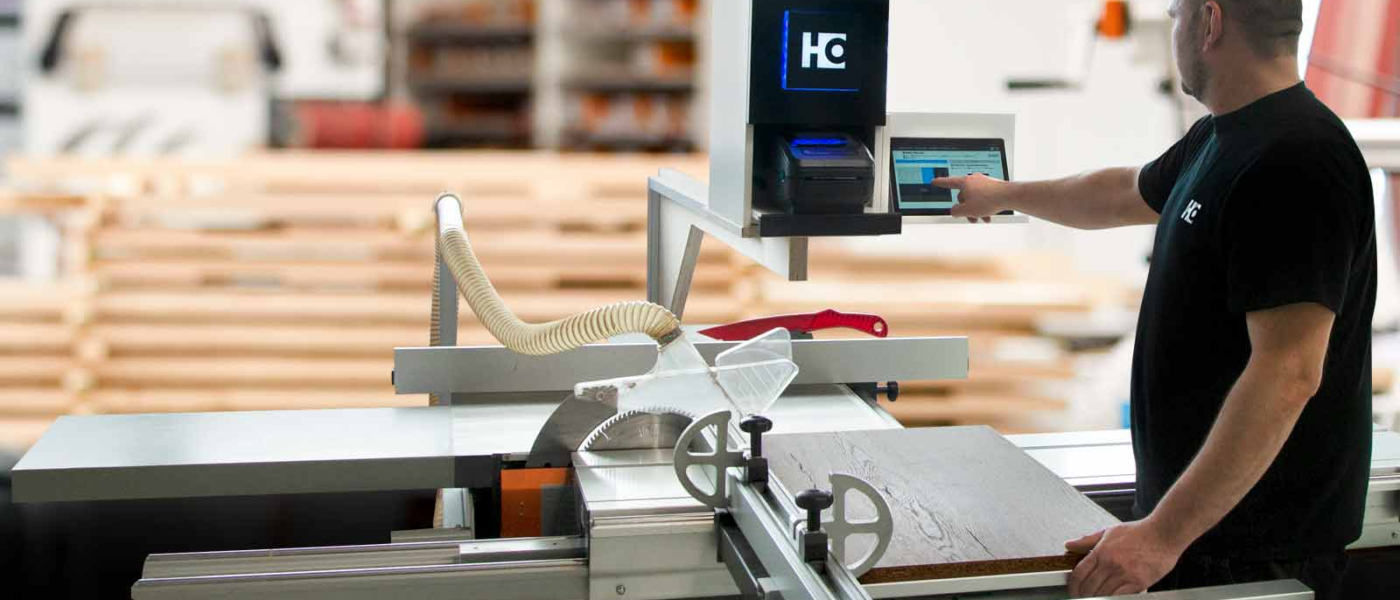Free Machining Assistant Course (6Months)
Machining Assistant/Helper Level 2:
Brief Job Description
The Helper role is responsible for small time routine jobs like cleaning, washing, fetching and holding tool for the operators, loading and unloading of work pieces on the machine setup , bringing raw material and spare parts from the stores etc.
Personal Attributes
Basic understanding of the machining and housekeeping process, Basic reading, writing and communication skills, safety orientation, ability to do physical tasks like lifting, holding etc- Ability to lift objects required during the operations either manually or using lifts, chains without displaying fatigue, hands and feet dexterity, good vision.

Maintain a safe and healthy working environment:
Elements and Performance Criteria
Identify and report the risks identified
To be competent, the user/individual on the job must be able to:
PC1.. Identify activities which can cause potential injury through sharp objects, burns, fall, electricity, gas leakages, radiation, poisonous fumes, chemicals ,loud noise
PC2. Inform the concerned authorities about the potential risks identified in the processes, workplace area/ layout, materials used etc
PC3. Inform the concerned authorities about machine breakdowns, damages which can potentially harm man/ machine during operations
PC4. Create awareness amongst other by sharing information on the identified risks
Create and sustain a Safe, clean and environment friendly work place
To be competent, the user/individual on the job must be able to:
PC5.. Follow the instructions given on the equipment manual describing the operating process of the equipments
PC6.. Follow the Safety, Health and Environment related practices developed by the organization
PC7. Operate the machine using the recommended Personal Protective Equipments (PPE)
PC8. . Maintain a clean and safe working environment near the work place and ensure there is no spillage of chemicals, production waste, oil, solvents etc
PC9. Maintain high standards of personal hygiene at the work place
PC10. Ensure that the waste disposal is done in the designated area and manner as per organization SOP.
PC11. Inform appropriately the medical officer/ HR in case of self or an employees illness of contagious nature so that preventive actions can be planned for others
Knowledge and Understanding (KU)
The individual on the job needs to know and understand:
KU1. relevant standards, procedures and policies related to Health, Safety and Environment followed in the company
KU2. basic knowledge of Safety procedures( fire fighting, first aid) within the organization
KU3. knowledge of various types of PPEs and their usage
KU4. basic knowledge of risks/hazards associated with each occupation in the organization
KU5. how to safely operate various tools and machines and risksassociated with the tools/ equipment
KU6. knowledge of personal hygiene and how an individual an contribute towards creating a highly safe and clean working environment
Generic Skills (GS)
User/individual on the job needs to know how to:
GS1. write basic level notes and observations
GS2. read safety instructions put up across the plant premises
GS3. read safety precautions mentioned in equipment manuals and panels to understand the potential risks associated
GS4. effectively communicate information to team members
GS5. informemployees in the plant and concerned functions about events, incidents & potential risks observed related to Safety, Health and Environment.
GS6. question operator/ supervisor in order to understand the safety related issues
GS7. attentively listen with full attention and comprehend the information given by the speaker during safety drills and training programs
GS8. use common sense and make judgments during day to day basis
GS9. use reasoning skills to identify and resolve basic problems
GS10. use common sense and make judgments during day to day basis
GS11. use reasoning skills to identify and resolve basic problems

Maintain 5S at the work premises:
Elements and Performance Criteria
Ensure sorting
To be competent, the user/individual on the job must be able to:
PC1.. follow the sorting process and check that the tools, fixtures & jigs that are lying on workstations are the ones in use and unnecessary items are not cluttering the workbenches or work surfaces.
PC2.. ensure segregation of waste in hazardous/ non hazardous waste as per the sorting work instructions
PC3.. follow the technique of waste disposal and waste storage in the proper bins as per sop
PC4.. segregate the items which are labelled as red tag items for the process area and keep them in the correct places
PC5. sort the tools/ equipment/ fasteners/ spare parts as per specifications/ utility into proper trays, cabinets, lockers as mentioned in the 5s guidelines/ work instructions
PC6. . ensure that areas of material storage areas are not overflowing
PC7. properly stack the various types of boxes and containers as per the size/ utility to avoid any fall of items/ breakage and also enable easy sorting when required
PC8. return the extra material and tools to the designated sections and make sure that no additional material/ tool is lying near the work area
PC9. follow the floor markings/ area markings used for demarcating the various sections in the plant as per the prescribed instructions and standards
PC10. follow the proper labeling mechanism of instruments/ boxes/ containers and maintaining reference files/ documents with the codes and the lists
Ensure proper documentation and storage ( organizing , streamlining)
To be competent, the user/individual on the job must be able to:
PC11. check that the items in the respective areas have been identified as broken or damaged
PC12. follow the given instructions and check for labelling of fluids, oils. lubricants, solvents, chemicals etc. and proper storage of the same to avoid spillage, leakage, fire etc
PC13. make sure that all material and tools are stored in the designated places and in the manner indicated in the 5s instructions
Ensure cleaning of self and the work place
To be competent, the user/individual on the job must be able to:
PC14. check whether safety glasses are clean and in good condition
PC15. keep all outside surfaces of recycling containers are clean
PC16.. ensure that the area has floors swept, machinery clean and generally clean. in case of cleaning, ensure that proper displays are maintained on the floor which indicate potential safety hazards
PC17.. check whether all hoses, cabling & wires are clean, in goodcondition and clamped to avoid any mishap or mix up
PC18.. ensure workbenches and work surfaces are clean and in good condition
PC19. follow the cleaning schedule for the lighting system to ensure proper illumination
PC20. store the cleaning material and equipment in the correct location and in good condition
PC21. ensure self-cleanliness – clean uniform, clean shoes, clean gloves, clean helmets, personal hygiene
Ensure sustenance
To be competent, the user/individual on the job must be able to:
PC22. follow the daily cleaning standards and schedules to create a clean working environment
PC23. attend all training programs for employees on 5 s
PC24. support the team during the audit of 5 s
PC25. participate actively in employee work groups on 5s and encourage team members for active participation
PC26. follow the guidelines for what to do and what not to do to build sustainability in 5s as mentioned in the 5s check lists/ work instructions

Knowledge and Understanding (KU)
The individual on the job needs to know and understand:
KU1. relevant standards, procedures and policies related to 5S followed in the company
KU2. have basic knowledge of 5S procedures
KU3. know various types 5s practices followed in various areas
KU4. understand the 5S checklists provided in the department/ team
KU5. have skills to identify useful & non useful items
KU6. have knowledge of labels , signs & colours used as indicators
KU7. knowledge on how to sort and store various types of tools, equipment, material etc.
KU8. know , how to identify various types of waste products
KU9. understand the impact of waste/ dirt/ dust/unwanted substances on the process/ environment/ machinery/ human body
KU10. have knowledge of best ways of cleaning & waste disposal
KU11. understand the importance of standardization in processes
KU12. understand the importance of sustainability in 5S
KU13. have knowledge of TQM process
KU14. have knowledge of various materials and storage norms
KU15. understand visual controls, symbols, graphs etc.
Generic Skills (GS)
User/individual on the job needs to know how to:
GS1. write basic level notes and observations
GS2. note down observations (if any) related to the process
GS3. read 5S instructions put up across the plant premises
GS4. effectively communicate information to team members inform employees in the plant and concerned functions about 5S
GS5. question the process head in order to understand the 5S related issues
GS6. attentively listen with full attention and comprehend the information given by the speaker during 5S training programs
GS7. use common sense and make judgments during day to day basis
GS8. use reasoning skills to identify and resolve basic problems using 5S
GS9. persuade co team members to follow 5 S
GS10. ensure that the co team members understand the importance of using 5 S tool
GS11. use innovative skills to perform and manage 5 S activities at the work desk and the shop floor
GS12. exhibit inquisitive behaviour to seek feedback and question on the existing set patterns of work
GS13. do what is right, not what is a popular practices
GS14. follow shop floor rules& regulations and avoid deviations; make 5S an integral way of life
GS15. ensure self-cleanliness on a daily basis
GS16. demonstrate the will to keep the work area in a clean and orderly manner

Support the machinist in the routine machining activities:
Elements and Performance Criteria
Fetching and holding tools for the operator
To be competent, the user/individual on the job must be able to:
PC1. . bring right toolkits for the operator and check whether all required tools are available in the tool kit
PC2. . hold the tools during operations in the correct manner as specified by the operator and the standard operating procedures so that the operator can easily complete the assigned job
Loading work pieces on the machines using fasteners and hand tools
To be competent, the user/individual on the job must be able to:
PC3. . support the assistant operator in arranging the work pieces in the specified manner as given in the setting document
PC4. . ensure that there is no damage done to the work pieces while loading them on the machining apparatus using pulleys, chains and other hoisting mechanisms
Replace worn tools and sharpen dull cutting tools and dies
To be competent, the user/individual on the job must be able to:
PC5. . use bench grinders and cutting grinder machines to replace the tools and dies
Support the assistant operator/ machinist in machine operations
To be competent, the user/individual on the job must be able to:
PC6. . use templates , measuring instruments and hand tools for the process of installation and adjustment of drills, cutters, dies and guides
PC7. . adjust tool positions and machine control mechanisms through the cranking (turning) process to ensure clearances and tolerances as specified in the operating manual
PC8. . extract the jammed pieces using fingers, wire hooks and lift bars
Maintenance and cleaning of machine and workplace
To be competent, the user/individual on the job must be able to:
PC9. . store equipment auxiliaries and spare parts in proper designated areas
PC10. . regularly clean the equipment and process auxiliaries (cutting tools, dies) to remove any dust, moisture, waste material which would have got collected on the equipment and remove the metal chips and extra coolant
PC11. . regularly clean the working area in the weld shop and create a healthy, clean and safe working environment
Knowledge and Understanding (KU)
The individual on the job needs to know and understand:
KU1. relevant standards and procedures followed in the company
KU2. different types of products manufactured by the company
KU3. different types of machining processes
KU4. different types of tools used in the machining process
KU5. basic principles of 5 S in manufacturing Cleaning, sorting
KU6. the application of coolants ad lubricants
KU7. basic Arithmetic and calculation methods
Generic Skills (GS)
User/individual on the job needs to know how to:
GS1. write basic level notes and observations
GS2. draw basic level drawings and charts
GS3. read documents and notes
GS4. interpret/ Comprehend the information given in the documents and notes
GS5. read and interpret symbols given on equipment and work area
GS6. discuss task lists and job requirements with co-workers
GS7. effectively communicate information to team members
GS8. question operator/ supervisor in order to understand the nature of the problem
GS9. attentively listen with full attention and comprehend the information given by the speaker
GS10. plan and organize the activities/ work allocated by supervisor and operator
GS11. organize all equipment and kits so that sorting is easy on a day to day basis
GS12. use common sense and make judgments during day to day basis
GS13. use reasoning skills to identify and resolve basic problems
GS14. follow instructions and work on areas of improvement identified
GS15. complete the assigned tasks with minimum supervision
GS16. complete the job defined by the supervisor within the timelines and quality norms
GS17. refer problems outside area of responsibility to appropriate person
Support the machinist in post machining process:
Elements and Performance Criteria
Unloading work pieces on the machines
To be competent, the user/individual on the job must be able to:
PC1. . support the assistant operator in removing the output products from the machining apparatus in the specified manner as given in the setting document
PC2. . use lifting tools like lifts, pulleys, chains, hoists and ensure that there is no damage done to the machined pieces while un loading them
Do Debarring
To be competent, the user/individual on the job must be able to:
PC3. . with the help of the correct tool remove the extra burrs and chips from the metal surface
Check quality of the machined pieces (Gauging)
To be competent, the user/individual on the job must be able to:
PC4. . support the assistant operator in measuring the specifications of the finished product using devices like micrometers, vernier calipers, gauges, rulers, weighing scales and any other inspection equipment
PC5. . bring right inspection tools for the operator and check whether all required tools are available near the inspection platform
PC6. . support the operator/ asst. operator in noting down the observations of the basic inspection process and identify pieces which are ok and also not meeting the specified standards
PC7. . separate the defective pieces into two categories pieces which can be repaired/ modified and pieces which are beyond repair and maintain records of each category
Knowledge and Understanding (KU)
The individual on the job needs to know and understand:
KU1. relevant standards and procedures followed in the company
KU2. different types of products manufactured by the company
KU3. basic norms for Quality in Production process
KU4. different types of machining processes
KU5. different types of tools used in the measurement and inspection process
KU6. different tools used for lifting objects
KU7. basic principles of 5 S in manufacturing Cleaning, sorting
KU8. basic Arithmetic and calculation methods
Generic Skills (GS)
User/individual on the job needs to know how to:
GS1. write basic level notes and observations
GS2. draw basic level drawings and charts
GS3. read documents and notes
GS4. interpret/ Comprehend the information given in the documents and notes
GS5. read and interpret symbols given on equipment and work area
GS6. discuss task lists and job requirements with co-workers
GS7. effectively communicate information to team members
GS8. question operator/ supervisor in order to understand the nature of the problem
GS9. attentively listen with full attention and comprehend the information given by the speaker
GS10. organize the activities/ work allocated by supervisor and operator
GS11. organize all equipment and kits so that sorting is easy on daily basis
GS12. use common sense and make judgments during day to day basis
GS13. use reasoning skills to identify and resolve basic problems
GS14. follow instructions and work on areas of improvement identified
GS15. complete the assigned tasks with minimum supervision
GS16. complete the job defined by the supervisor within the timelines and quality norms
GS17. ability to identify defective parts in the manufacturing line by comparing manufactured pieces with the work standard
Assessment Guidelines:
- Criteria for assessment for each Qualification Pack will be created by the Sector Skill Council. Each Element/ Performance Criteria (PC) will be assigned marks proportional to its importance in NOS. SSC will also lay down proportion of marks for Theory and Skills Practical for each Element/ PC.
- The assessment for the theory part will be based on knowledge bank of questions created by the SSC.
- Assessment will be conducted for all compulsory NOS, and where applicable, on the selected elective/option NOS/set of NOS.
- Individual assessment agencies will create unique question papers for theory part for each candidate at each examination/training center (as per assessment criteria below).
- Individual assessment agencies will create unique evaluations for skill practical for every student at each examination/ training center based on these criteria.
- To pass the Qualification Pack assessment, every trainee should score the Recommended Pass % aggregate for the QP.
- In case of unsuccessful completion, the trainee may seek reassessment on the Qualification Pack.










